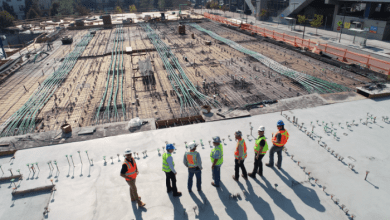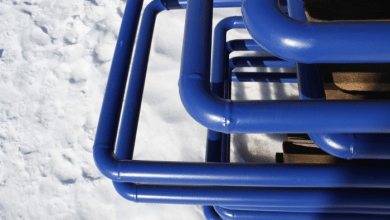
Understanding Muscle Growth

What is Muscle Hypertrophy?
Muscle hypertrophy is the process by which your muscle fibers increase in size. This can occur through various forms of resistance training, where muscles are subjected to stress and strain. As your muscles recover from these stresses, they adapt by growing larger and stronger. There are two primary types of hypertrophy:
- Myofibrillar Hypertrophy: This type involves an increase in the size and number of myofibrils, which are the contractile units of muscle fibers. This leads to greater strength.
- Sarcoplasmic Hypertrophy: This type involves an increase in the volume of sarcoplasmic fluid in the muscle cell, which supports endurance and muscle size.
The Science Behind Muscle Building
Muscle building relies on a process called muscle protein synthesis (MPS), which is stimulated through resistance training and nutrition. When you engage in strength training, tiny tears occur in your muscle fibers. The body responds by repairing these tears through MPS, ultimately leading to increased muscle size and strength.
Key Components of Muscle Building
To effectively build muscle, you need to consider several essential components:
Resistance Training
Resistance training is crucial for stimulating muscle growth. This can include weightlifting, bodyweight exercises, or resistance band workouts. Here are some effective strategies:
Compound Exercises
Compound exercises work multiple muscle groups at once, maximizing your workout efficiency. Some examples include:
- Squats: Target the quadriceps, hamstrings, and glutes.
- Deadlifts: Engage the back, glutes, and hamstrings.
- Bench Press: Work on the chest, shoulders, and triceps.
- Pull-Ups: Strengthen the back, biceps, and shoulders.
Incorporating these exercises into your routine can lead to greater overall muscle growth.
Progressive Overload
To continue building muscle, you must challenge your muscles consistently. Progressive overload involves gradually increasing the weight, frequency, or intensity of your workouts. This could mean adding weight to your lifts, increasing the number of repetitions, or performing additional sets.
Nutrition for Muscle Growth
Your diet plays a vital role in building muscle. Consuming the right nutrients can optimize recovery and promote muscle growth.
Protein Intake
Protein is essential for muscle repair and growth. Aim for a protein-rich diet, incorporating sources such as:
- Lean Meats: Chicken, turkey, and lean beef.
- Fish: Salmon and tuna are great options.
- Plant-Based Proteins: Beans, lentils, and quinoa.
- Dairy Products: Greek yogurt and cottage cheese.
A general guideline is to consume about 1.6 to 2.2 grams of protein per kilogram of body weight daily for optimal muscle gain.
Carbohydrates for Energy
Carbohydrates provide the energy necessary for intense workouts. Focus on complex carbohydrates, which offer sustained energy release, and consider incorporating l-glutamine to support muscle recovery and endurance. Good sources include:
- Whole Grains: Brown rice, oats, and whole-grain bread.
- Fruits and Vegetables: Bananas, berries, and leafy greens.
- Legumes: Beans and lentils.
Recovery and Rest
Recovery is a crucial aspect of muscle building. Muscles grow during rest, not during workouts. Here’s how to optimize recovery:
Sleep
Adequate sleep is vital for muscle recovery and growth. Aim for 7-9 hours of quality sleep each night to allow your body to repair and regenerate muscle tissue.
Active Recovery
Incorporate active recovery days into your routine. Activities like walking, yoga, or light swimming can help promote blood flow and aid recovery without straining your muscles.
Also Read: Travel Captions for Instagram
Hydration
Staying hydrated is essential for overall health and performance. Water plays a role in nutrient transport and muscle function. Aim to drink at least 3 liters of water daily, adjusting based on your activity level.
Developing a Muscle-Building Routine

Creating a structured workout plan is essential for achieving your muscle-building goals. Here’s how to develop an effective routine:
Determine Your Fitness Level
Before creating a workout plan, assess your current fitness level. This will help you set realistic goals and select appropriate exercises.
Set Specific Goals
Define your muscle-building goals. Are you looking to gain strength, size, or endurance? Setting specific, measurable, achievable, relevant, and time-bound (SMART) goals will help keep you motivated.
Choose the Right Exercises
Select a variety of exercises that target all major muscle groups. Your routine should include:
- Upper Body: Bench press, rows, shoulder press, and pull-ups.
- Lower Body: Squats, deadlifts, lunges, and calf raises.
- Core: Planks, crunches, and leg raises.
Plan Your Workout Schedule
Design a workout schedule that allows for adequate rest between sessions. A typical approach might be:
- 3-Day Split: Train different muscle groups on separate days (e.g., upper body, lower body, core).
- Full-Body Workouts: Train all major muscle groups in each session, 2-3 times per week.
Sample Weekly Workout Plan
| Day | Workout Type |
|---|---|
| Monday | Upper Body |
| Tuesday | Lower Body |
| Wednesday | Rest or Active Recovery |
| Thursday | Full Body |
| Friday | Core + Cardio |
| Saturday | Lower Body |
| Sunday | Rest or Active Recovery |
Tracking Progress
Monitoring your progress is crucial for staying motivated and ensuring you’re on the right path. Consider these methods:
Keep a Workout Log
Maintain a record of your workouts, including exercises, weights, sets, and repetitions. This will help you identify patterns, track progress, and adjust your training as needed.
Take Measurements
Consider taking body measurements (e.g., arms, chest, waist, legs) and tracking changes over time. This can provide a tangible way to see your progress beyond just the scale.
Assess Strength Gains
Periodically test your strength with specific lifts to measure improvements. This can include maxing out on major lifts or performing more repetitions with the same weight.
Common Mistakes to Avoid
Building muscle can be challenging, and certain mistakes can hinder your progress. Here are some common pitfalls to avoid:
Neglecting Nutrition
Failing to consume enough protein or calories can significantly impede muscle growth. Ensure you’re fueling your body appropriately for your workouts.
Overtraining
While pushing yourself is important, overtraining can lead to injuries and burnout. Listen to your body and allow for adequate rest and recovery.
Inconsistent Training
Consistency is key in any fitness journey. Missing workouts or changing routines too frequently can stall your progress.
Focusing Solely on Isolation Exercises
While isolation exercises have their place, they should not be the foundation of your routine. Prioritize compound movements for maximum results.
Supplementation for Muscle Building

Supplements can be helpful in supporting your muscle-building efforts, but they should not replace a balanced diet. Consider these options:
Protein Supplements
Whey or plant-based protein powders can help you meet your daily protein requirements, especially post-workout.
Creatine
Creatine monohydrate is a popular supplement that can enhance strength and muscle mass when used consistently.
Branched-Chain Amino Acids (BCAAs)
BCAAs can help reduce muscle soreness and promote recovery when taken before or after workouts.
Building muscle is a multifaceted process that requires dedication, proper training, nutrition, and recovery. By understanding the principles of muscle growth and implementing effective strategies, you can achieve your fitness goals. Remember to stay consistent, monitor your progress, and make adjustments as needed.
Whether you’re a beginner or an experienced lifter, the journey to building muscle can be rewarding and empowering. Embrace the process, and enjoy the transformation of both your body and mindset. With commitment and the right approach, you can sculpt the physique you desire.



